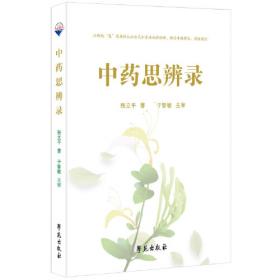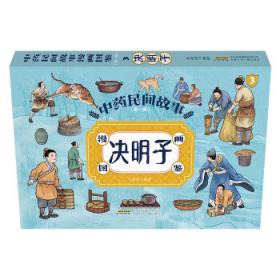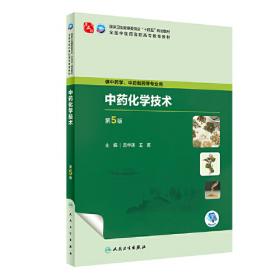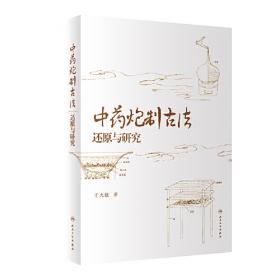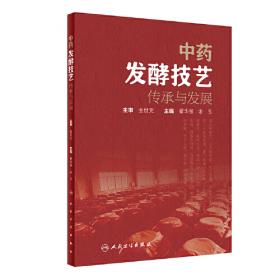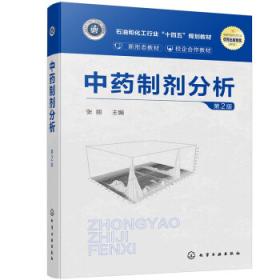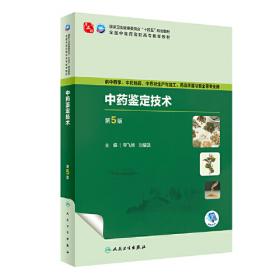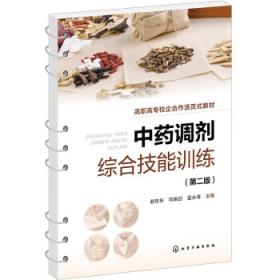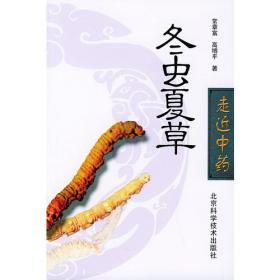中药化学/全国高等中医药院校中药学类专业双语规划教材
出版时间:
2020-08
版次:
1
ISBN:
9787521418699
定价:
89.00
装帧:
平装
开本:
16开
纸张:
胶版纸
页数:
443页
6人买过
-
《中药化学/全国高等中医药院校中药学类专业双语规划教材》是“全国高等中医药院校中药学类专业双语规划教材”之一,根据教育部相关文件精神和中药学类专业教学大纲基本要求,结合现行版《中国药典》和国家执业药师资格考试大纲要求编写而成,内容涵盖中药所含主要类型化学成分的结构特点、理化性质、提取分离、检识和结构鉴定等基本知识,同时还介绍了30味常用中药主要有效成分的结构特点、提取分离检识方法及质量控制标准等。
《中药化学/全国高等中医药院校中药学类专业双语规划教材》正文部分采用以英文为主、专业词汇括号内中文标注的方式,具有便于通读、易于读懂的特点。在每章开头有“学习目标”中文版块,利于读者了解本章将要学习内容的重点;在每章结尾有“词汇表”“重点小结”和“目标检测”中文版块,利于读者更好地掌握本章的重要知识点,并对学习效果进行自行检测,因此《中药化学/全国高等中医药院校中药学类专业双语规划教材》具有方便学习、易于掌握重点知识、可自行检测学习效果等实用性强的特点。
《中药化学/全国高等中医药院校中药学类专业双语规划教材》为书网融合教材,即纸质教材有机融合电子教材、教学配套资源和数字化教学服务(在线教学、在线作业、在线考试)。
《中药化学/全国高等中医药院校中药学类专业双语规划教材》可作为全国中医药院校中药学、中药资源学、中药制剂学、临床中药学、中药制药工程等相关专业的本科双语教学、留学生和研究生教学用书,也可作为中医药行业考试与培训及广大中医药工作者参考用书。 本书第一作者为北京中医药大学资深教授,从事中药学专业研究多年,获奖无数。教授本科生、研究生及留学生课程多年,教授形式生动、活泼,深受学生喜爱。 Chapter 1 General Introduction to Chemistry of Chinese Materia Medica
1 Conception of Chemistry of Chinese Materia Medica
2 Application of Chemistry of Chinese Materia Medica
2.1 To Clarify the Effective Composition of Chinese Herbs
2.2 To Facilitate the Development of New Chinese Patent Medicine
2.3 To Benefit Other Related Subjects of Chinese Medicine
3 Progress of Chemistry of Chinese Materia Medica
3.1 Development in Effective Composition of Chinese Herbs
3.2 Development in New Drug Research and Pharmaceutical Industry
3.3 Development of Quality Control for Chinese Herbs
Chapter 2 GeneraIMethods for Chemical Investigation of Chinese Herbs
1 Biosynthetic (生物合成的) Pathways and Classification of Chemical Constituents from Chinese Herbs
1.1 Biosynthetic Pathways
1.2 Classification of Chemical Constituents
2 General Methods for Chemical Investigation of Chinese Herbs
2.1 Extraction Methods
2.2 Isolation Methods
2.3 Structure Determination Methods
Chapter 3 Saccharides and Glycosides
1 Saccharides
1.1 Introduction
1.2 Structure and Classification
1.3 Properties of Saccharides
2 Glycosides
2.1 Introduction
2.2 Structure and Classification
2.3 General Physicochemical Properties
3 Extraction and isolation Methods
3.1 Extraction Methods
3.2 Isolation Methods
4 Identification
4.1 Physicochemical Identification
4.2 Chromatography Identification
5 Structure Determination
5.1 Determination of Physical Constants
5.2 Determination of Molecular Formula and Molecular Weight
5.3 Identification of Aglycones and Saccharides
5.4 Determination of Linkage Sequence and Position of Monosaccharides
5.5 Determination of Configuration of Glycosidic Linkage
6 Examples of Chinese Herbs Containing Polysaccharides and Glycosides
6.1 Lycii Fructus (枸杞子)
6.2 Armeniacae Semen Amarum (苦杏仁)
……
Chapter 4 Quinones
Chapter 5 Phenylpropanoids
Chapter 6 Flavonoids
Chapter 7 Tannins
Chapter 8 Alkaloids
Chapter 9 Steroids
Chapter 10 Terpenoids and Volatile Oils
Chapter 11 Saponins
Chapter 12 Other Constituents
岗位对接
目标检测答案
参考文献
-
内容简介:
《中药化学/全国高等中医药院校中药学类专业双语规划教材》是“全国高等中医药院校中药学类专业双语规划教材”之一,根据教育部相关文件精神和中药学类专业教学大纲基本要求,结合现行版《中国药典》和国家执业药师资格考试大纲要求编写而成,内容涵盖中药所含主要类型化学成分的结构特点、理化性质、提取分离、检识和结构鉴定等基本知识,同时还介绍了30味常用中药主要有效成分的结构特点、提取分离检识方法及质量控制标准等。
《中药化学/全国高等中医药院校中药学类专业双语规划教材》正文部分采用以英文为主、专业词汇括号内中文标注的方式,具有便于通读、易于读懂的特点。在每章开头有“学习目标”中文版块,利于读者了解本章将要学习内容的重点;在每章结尾有“词汇表”“重点小结”和“目标检测”中文版块,利于读者更好地掌握本章的重要知识点,并对学习效果进行自行检测,因此《中药化学/全国高等中医药院校中药学类专业双语规划教材》具有方便学习、易于掌握重点知识、可自行检测学习效果等实用性强的特点。
《中药化学/全国高等中医药院校中药学类专业双语规划教材》为书网融合教材,即纸质教材有机融合电子教材、教学配套资源和数字化教学服务(在线教学、在线作业、在线考试)。
《中药化学/全国高等中医药院校中药学类专业双语规划教材》可作为全国中医药院校中药学、中药资源学、中药制剂学、临床中药学、中药制药工程等相关专业的本科双语教学、留学生和研究生教学用书,也可作为中医药行业考试与培训及广大中医药工作者参考用书。
-
作者简介:
本书第一作者为北京中医药大学资深教授,从事中药学专业研究多年,获奖无数。教授本科生、研究生及留学生课程多年,教授形式生动、活泼,深受学生喜爱。
-
目录:
Chapter 1 General Introduction to Chemistry of Chinese Materia Medica
1 Conception of Chemistry of Chinese Materia Medica
2 Application of Chemistry of Chinese Materia Medica
2.1 To Clarify the Effective Composition of Chinese Herbs
2.2 To Facilitate the Development of New Chinese Patent Medicine
2.3 To Benefit Other Related Subjects of Chinese Medicine
3 Progress of Chemistry of Chinese Materia Medica
3.1 Development in Effective Composition of Chinese Herbs
3.2 Development in New Drug Research and Pharmaceutical Industry
3.3 Development of Quality Control for Chinese Herbs
Chapter 2 GeneraIMethods for Chemical Investigation of Chinese Herbs
1 Biosynthetic (生物合成的) Pathways and Classification of Chemical Constituents from Chinese Herbs
1.1 Biosynthetic Pathways
1.2 Classification of Chemical Constituents
2 General Methods for Chemical Investigation of Chinese Herbs
2.1 Extraction Methods
2.2 Isolation Methods
2.3 Structure Determination Methods
Chapter 3 Saccharides and Glycosides
1 Saccharides
1.1 Introduction
1.2 Structure and Classification
1.3 Properties of Saccharides
2 Glycosides
2.1 Introduction
2.2 Structure and Classification
2.3 General Physicochemical Properties
3 Extraction and isolation Methods
3.1 Extraction Methods
3.2 Isolation Methods
4 Identification
4.1 Physicochemical Identification
4.2 Chromatography Identification
5 Structure Determination
5.1 Determination of Physical Constants
5.2 Determination of Molecular Formula and Molecular Weight
5.3 Identification of Aglycones and Saccharides
5.4 Determination of Linkage Sequence and Position of Monosaccharides
5.5 Determination of Configuration of Glycosidic Linkage
6 Examples of Chinese Herbs Containing Polysaccharides and Glycosides
6.1 Lycii Fructus (枸杞子)
6.2 Armeniacae Semen Amarum (苦杏仁)
……
Chapter 4 Quinones
Chapter 5 Phenylpropanoids
Chapter 6 Flavonoids
Chapter 7 Tannins
Chapter 8 Alkaloids
Chapter 9 Steroids
Chapter 10 Terpenoids and Volatile Oils
Chapter 11 Saponins
Chapter 12 Other Constituents
岗位对接
目标检测答案
参考文献
查看详情
-
全新
河北省保定市
平均发货15小时
成功完成率85.29%
-
全新
北京市丰台区
平均发货25小时
成功完成率84.26%
-
全新
天津市津南区
平均发货13小时
成功完成率85.26%
-
全新
河北省保定市
平均发货31小时
成功完成率88.11%
-
全新
北京市房山区
平均发货35小时
成功完成率83.1%
-
 2
2
全新
河北省保定市
平均发货24小时
成功完成率82.23%
-
 2
2
全新
广东省广州市
平均发货16小时
成功完成率92.21%
-
 2
2
全新
广东省广州市
平均发货17小时
成功完成率94.74%
-
全新
-
 2
2
全新
浙江省嘉兴市
平均发货13小时
成功完成率94.97%
-
全新
-
 2
2
全新
北京市西城区
平均发货16小时
成功完成率92.03%
-
 2
2
全新
浙江省嘉兴市
平均发货9小时
成功完成率95.56%
-
全新
北京市通州区
平均发货16小时
成功完成率83.72%
-
 2
2
全新
浙江省嘉兴市
平均发货10小时
成功完成率93.14%
-
全新
四川省成都市
平均发货52小时
成功完成率85.45%
-
 2
2
全新
广东省广州市
平均发货7小时
成功完成率93.89%
-
 2
2
全新
北京市通州区
平均发货9小时
成功完成率89.42%
-
 6
6
全新
河北省廊坊市
平均发货10小时
成功完成率79.69%
-
全新
北京市朝阳区
平均发货12小时
成功完成率93.07%
-
全新
-
 2
2
全新
河北省保定市
平均发货10小时
成功完成率85.46%
-
 2
2
全新
河北省保定市
平均发货7小时
成功完成率91.79%
-
全新
广东省广州市
平均发货8小时
成功完成率89.43%
-
 5
5
全新
湖南省益阳市
平均发货43小时
成功完成率84.62%
-
 3
3
全新
江苏省扬州市
平均发货16小时
成功完成率83.54%
-
2023年 印刷
印次: 1
全新
山西省太原市
平均发货20小时
成功完成率85.62%

 占位居中
占位居中






































